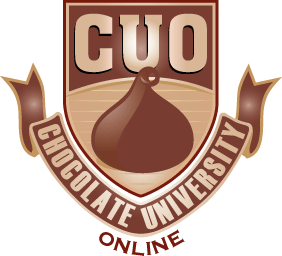Making Home-made Chocolates
The process is actually similar to roasting coffee beans, however with gentler requirements. You need to roast them for 5-35 minutes at temperatures between 120-160 degrees C. What you should do first is expose the beans to a high temperature, and then lower the temperature eventually. Then, stop roasting when you have observed that the beans are starting to crack
After roasting them, crack using a hammer and get rid of the husks by hand if you work with a small batch. And for larger batch you may utilize a very coarse, Corona type mill when cracking the beans into nibs. Stir the nibs in a gentle manner using your hands or a spoon to winnow the nibs while you blow on them using a hair dryer up to the point where the husks are blown away.
You will be needing something strong enough in order to liquefy the nibs and separate the remaining husks. General food processors and majority of the juicers won’t do. A lot of individuals making chocolate at home are successful with the Champion Juicer. Feed the nibs in a lenient manner into the juicer one handful at a time. Otherwise, the motor might overheat. Cocoa liqueur will be coming out of the screen, with the mixture of husks and liqueur through the spout. Feed mixture through the juicer only until husk is coming out of the spout.
Conch and refine could be done at the same time with the use of a powerful wet grinder. Conch and refining rely upon the equipment that is utilized.
Tempering is practically the hardest part of making a chocolate. It guarantees you that your chocolate comes out to be shiny with a snap to it instead of being matte and soft that would melt in your hand. You have to take care that no moisture enters your chocolate. If moisture enters your chocolate it will ruin it. For that you can buy a tempering machine online.
Lastly, you mold the chocolate while it is still liquid. Gently pour it into the molds, making sure it won’t get spilled. You can pour them using a big syringe in the mould. You have the freedom to freeze, refrigerate, or let them harden at room temperature. Remove them after they have hardened into the mold. They must have a glossy appearance and must snap cleanly.
Categories: chocolate articles Tags: Chocolates, coming, feed, Homemade Chocolates, making, roasting, Tempering
From the Bean to the Bar
There is much more to making fine chocolate than picking a cacao bean and cooking it. Going from tree to chocolate bar takes a special touch to achieve the perfection you’re looking for.
Bean selection is the first step in making chocolate. If the bean chosen isn’t of high quality, the end result will be a less than desirable chocolate. Therefore, many fine chocolate makers take time to personally select the best beans.
Once a chocolatier selects the beans they are roasted. The roasting process has a great impact on the finished flavor. After roasting, the beans are put into a grinding process. The pulverized mass is called chocolate liquor and is turned into the actual chocolate.
To create the final chocolate bar from chocolate liquor, sugar and other ingredients are added to the liquor. Then another grinding process called refining is begun. Refining crushes everything and helps ensure that that the chocolate bar doesn’t have a grainy feeling in your mouth. Following the refining process, the mix is cooked and stirred in a process called conching. This step can take place over a few hours or days. It is at this point that chocolate begins to take on the flavor that most chocoholics love.
After conching, cocoa butter can be added to change the flow. Then the chocolate can be put into its final form, liquid or solid. If the final product is in solid form it must be tempered. Then it is packaged and shipped. If it took the form of a chocolate bar, now it’s finally ready for you to purchase and eat. Yum.
For a fun and tasty chocolate education visit Chocolate University Online.




